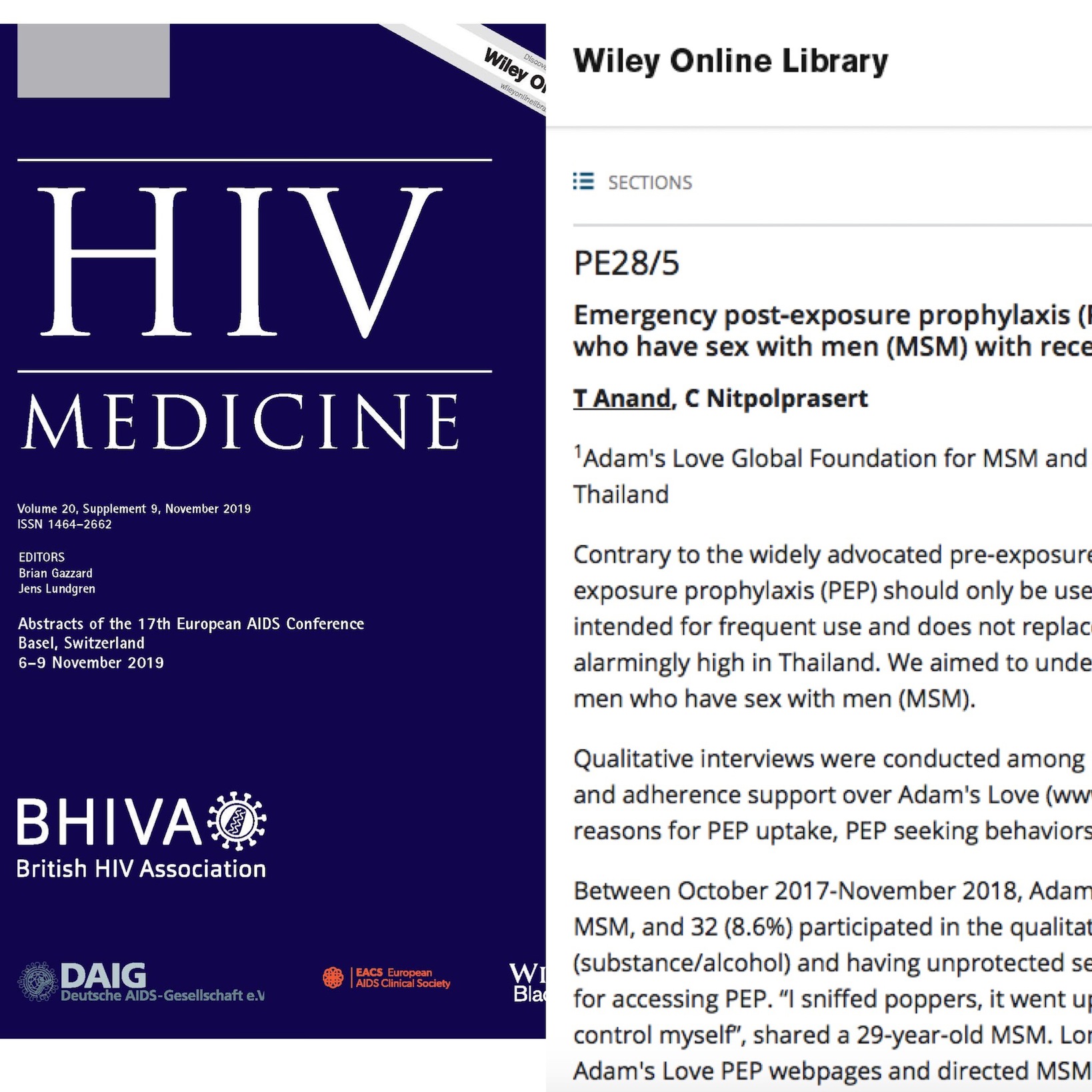|
|
Emergency post-exposure prophylaxis (PEP) seeking behaviors among men who have sex with men (MSM) with recent HIV risk exposure in Thailand PE28/5 - Emergency post-exposure prophylaxis (PEP) seeking behaviors among men who have sex with men (MSM) with recent HIV risk exposure in Thailand Tarandeep Anand, Chattiya Nitpolprasert Adam's Love Global Foundation for MSM and Transgender Health (ALGO), Bangkok, Thailand Abstract Introduction: Contrary to the widely advocated pre-exposure prophylaxis (PrEP) HIV prevention tool, post-exposure prophylaxis (PEP) should only be used as an emergency intervention, is not intended for frequent use and does not replace condoms. However, PEP demand is alarmingly high in Thailand. We aimed to understand PEP seeking behaviors among Thai men who have sex with men (MSM). Methods: Qualitative interviews were conducted among MSM seeking HIV risk assessment, PEP linkage and adherence support over Adam´s Love (www.adamslove.org) platforms to elicit the reasons for PEP uptake, PEP seeking behaviors and future PrEP use intentions. Results: Between October 2017-November 2018, Adam's Love provided PEP eCounseling to 370 MSM, and 32 (8.6%) participated in the qualitative study. Being under influence (substance/alcohol) and having unprotected sex with unknown status partner were reasons for accessing PEP. “I sniffed poppers, it went up through my nose and after that I couldn´t control myself”, shared a 29-year-old MSM. Long-tail Google keyword-searches yielded Adam's Love PEP webpages and directed MSM to eCounselors. “I had risk around 2 am and immediately searched for emergency HIV medicine and contacted Adam´s Love”, noted 23-year-old MSM. Primary barriers to accessing PEP included high drug costs “Medicine cost is an obstacle. If I didn´t have money, I would have decided not to take PEP” (21-year-old MSM) and clinic hours “I had sex on Saturday but clinic was closed on Sunday so contacting provider was difficult” (26-year-old MSM). Except one participant who discontinued PEP due to side-effects, all 31 participants completed 28 days PEP regimen and were highly-satisfied with daily PEP reminders. Low self-perceived risk, anticipating lower perceived probability of future risks, and prior PEP side-effects were reasons for majority's (23/31) lack of interest in PrEP. Conclusion: Surge in PEP demand and PEP-taker's lack of interest in PrEP calls for greater emphasis on provider-initiated tailored counseling interventions.  Adams Love and TemanTeman.org abstracts published in HIV Medicine Special Issue: Abstracts of the 17th European AIDS Conference, Basel, Switzerland, 6‐9 November 2019, Volume 20, Issue S9 Download the EACS 2019 Abstract eBook at Wiley Online Library |
















